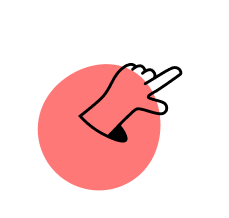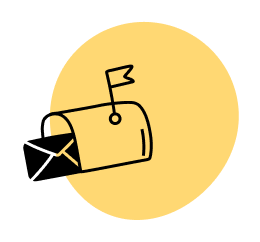Webinars are amazing tools for online business owners to teach and inspire their audience, and make a few sales along the way. A webinar gives you a chance to:
- Build your audience and engage with them
- Teach your audience something
- Validate an idea for a product or service
- Make money through the webinar itself
With all that potential, how do you make sure you’re getting the most out of each webinar for your business and your audience? Here are five tips to keep in mind for your next webinar that sometimes fly under the radar.
Key #1: Invest—but don’t overinvest—in your webinar tech
There are four important pieces of technology you’ll need for a successful webinar:
- A webcam
- Good lighting
- A fast, stable internet connection
- Audio equipment (a good microphone)
Some of these items will require a monetary investment—but you shouldn’t have to break the bank, either. Here’s how to make sure you’ve got what you need to deliver a smooth, pleasant audio and video experience without ditching the avocado toast.
Webcam
For the webcam, you can definitely get away with the built-in camera on your laptop. But I do recommend investing in something a little nicer if you can afford it. My favorite high-quality entry-level webcam is the Logitech C920. If you’re willing to spend a little more, let me point you to the Logitech BRIO 4k.
Lighting
Lighting is another area where you can easily drop a loooot of money—but you don’t have to. See what you can do with what you’ve got on hand first. You’d be surprised how much improvement you can get just by working with the way you position yourself in your room and using your windows strategically.
Check it out:
And if you’ve maxed out what you can do with window light, camera placement, etc., you can get to the next level of lighting improvement with a basic ring light.
Internet Connection
The quality and speed of your internet connection is another crucial component for a successful webinar. The bandwidth demands of a webinar can be intense, and nobody wants to tune into a webinar with choppy audio or glitchy video. But before you call up your internet service provider to upgrade your plan, make sure you’re making the most of your current service level. First, run an Ethernet cable directly from your router to your computer for a more reliable connection. Then quit all unnecessary apps and make sure no one else on your network is using a ton of bandwidth during your webinar (like watching a streaming video).
Microphone
Last but not least, you’ll want to invest in a decent microphone. Thankfully, you can get a whole lot of mic for not a whole lot of cash. Our recommended model is the Samson Q2U, and it’ll run you about $120. It even comes with a desktop stand, pop filter, and cables.
Key #2: Nail the webinar registration page
Marketing your webinar effectively is crucial, obviously. And there are lots of ways to market your webinar—email marketing, Facebook ads, blog posts, etc. But however you promote the thing, you’re going to want to direct people to a landing page to register for it—making your registration page one of the most important assets in your webinar marketing arsenal.
So what should your webinar registration page look like? Here are a few pretty good examples (if we may say so ourselves):
- Podcasting the Smart Way
- Double Your Downloads
- Affiliate Marketing Masterclass
- Free Podcasting Webinar with David Siteman Garland
These landing pages have a few key elements in common:
- The title of the webinar at the top, followed by subtitle or value proposition (i.e., what you’ll learn).
- A picture of the presenter (plus any additional hosts), because people connect with faces and want to see who they’ll be learning from.
- Some bullet points that go into more depth about the content of the webinar and what people will get from it.
- The presenter’s bio, which provides an extra boost of credibility.
- Registration buttons at multiple points on the page so people can easily click to sign up.
- If you like, a countdown timer to create a little urgency.
The final key to an effective registration page—which may not be as obvious as a countdown clock or presenter headshot—is that it uses the language of its target audience. Whether you’re marketing your webinar on a landing page, on social media, via email marketing, through Facebook ads, or any of the above, you need to address your audience’s needs and problems using the words and phrases they use. You need to speak their language.
Key #3: Use pattern interrupts to keep people engaged
Your job as webinar emcee is to keep your audience tuned in—and one of the best ways to do that is by using pattern interrupts.
The concept is simple: you just need to mix things up every once in a while. Pattern interrupts are a fantastic way to break up monotony during your webinar and keep people engaged. Here are a couple different ways to use pattern interrupts to keep people alert throughout the show:
- Change up what’s on screen. Switching back and forth between slides and your webcam is a great way to interrupt the pattern. If you have multiple cameras, you can even switch between camera angles to keep things interesting.
- Take a breather once in a while and check in with the audience. After each section of your presentation, switch from professional presentation mode and into engagement mode by saying things like, “Hey everybody, let me know what the most relevant or most surprising part of the last section was for you.” You can even mention names and thank people. This gives everybody a chance to settle before diving back in.
It’s important to use pattern interrupts in a way that’s not jarring. Practice your webinar a few times beforehand (with a small audience if possible) to figure out the timing of your transitions.
Key #4: Planning to pitch? Be upfront about it
As you learned earlier, webinars are a great way to educate your audience, build relationships, and promote a premium product. For a lot of entrepreneurs, the idea of selling on a webinar might be scary. And I get it. You don’t want to feel slimy or sketchy.
Thankfully, there are ways to get around these fears and sell on your webinar in a way that your audience will appreciate. The most important one is to make sure that your webinar is packed with value. Nothing’s going to make your webinar attendees more frustrated than wasting their time and then trying to take their money.
What else can you do to make sure your webinar pitch lands on welcome ears and eyes? There’s another maybe less obvious strategy, and it’s to simply tell people what’s coming. Be upfront that you’ll be selling something! Expectations are your best friend—if you mention early on that you’ll be selling later on, you won’t catch anybody by surprise. You can deliver the rest of your webinar more relaxed and confident in the knowledge that everyone knows what’s coming.
Key #5: Don’t disappear as soon as the webinar’s over
You just wrapped your webinar, and it was a hit! Your work’s not done—but neither is your opportunity to reach more people. You have a valuable resource in hand you can use for ongoing marketing and audience building, which is your webinar replay. You did record your webinar, right? 😉
You can use that recording to continue:
- Educating your audience
- Selling your promoted offer
- Growing your email list
At SPI, the bulk of our sales typically happen after the webinar is over. That’s right—the post-webinar phase is just as important as (and arguably more important than!) what happens before.
That’s why your webinar planning process should include building a follow-up sequence, a series of emails and messages you send after the webinar that will let you put that webinar replay to its best use. You can use the webinar replay as a bonus training resource that people get access to for joining your email list. And of course, you can use it to guide people to take action on the offer you promoted in your webinar.
You can also use your webinar replay to create what’s called an evergreen webinar—taking a one-time event and turning it into something you can promote throughout the year and that people can access anytime. This saves time and energy and helps you deliver an amazing educational experience—and more consistent sales—throughout the year.
There you have it—five ways that might be a little less than obvious to improve your chances of a successful webinar. If you’re itching to learn more, this is just the tip of the iceberg.
Our newest course, A to Z Webinars, gives you a complete framework for creating, promoting, and delivering engaging webinars that help you grow your business.
 Ray Sylvester
Ray Sylvester
 John Corcoran
John Corcoran

